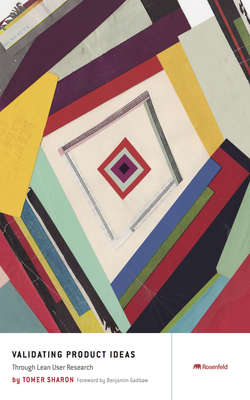Читать книгу Validating Product Ideas - Tomer Sharon - Страница 41
На сайте Литреса книга снята с продажи.
How and Where?
ОглавлениеNow, let’s choose how and where to interview:
• In-person in a quiet room. This is the most recommended format for conducting an interview. Being there with a human being who is a user or potential user of your creation (or future creation) is the most humbling experience you’ll have during the development process. An even better setup would be to conduct the interview in person at a relevant place for your product or service idea. For example, if you have an idea for an app that helps people with their grocery shopping, try an in-person interview at your participants’ homes before and after actual grocery shopping, as well as during the store experience. You’ll get more rich input than you would imagine, such as people’s rituals, artifacts they own, and other people in the ecosystem that might affect your product (kids, spouse, etc.). The fact that it’s their domain and you are the guest will have people be more open to sharing things that they would never share otherwise.
• Street intercept. An interview format in which you grab passersby on the street and ask them a few questions. Two primary characteristics of street intercepts are 1) you must get out of your comfort zone and accept the fact that many people will refuse to be interviewed. 2) These interviews are not very deep and will only last 5 to 15 minutes. Many startups consider these “Starbucks” interviews as the primary technique for “Getting out of the building,” yet that’s not the case. Choose this type of interview when you want to collect specific quantitative data you cannot (or have difficulty) collecting otherwise. For example, if your product idea involves people who have no access to the Internet or smartphones, conduct street intercepts in areas where such people are more likely to walk.
• Remotely through video (through Skype, GoToMeeting, Hangout, etc.) or phone. A flavor of an interview in which the interviewer is not in the same location as the interviewee. It’s better to be there in person, yet in many cases, it’s much better to conduct a remote interview rather than to skip it completely and make product roadmap decisions based on guesswork.
The remaining steps refer to interviewing a product user or potential user (not an extreme user or an expert) in person or remotely (not on the street).
